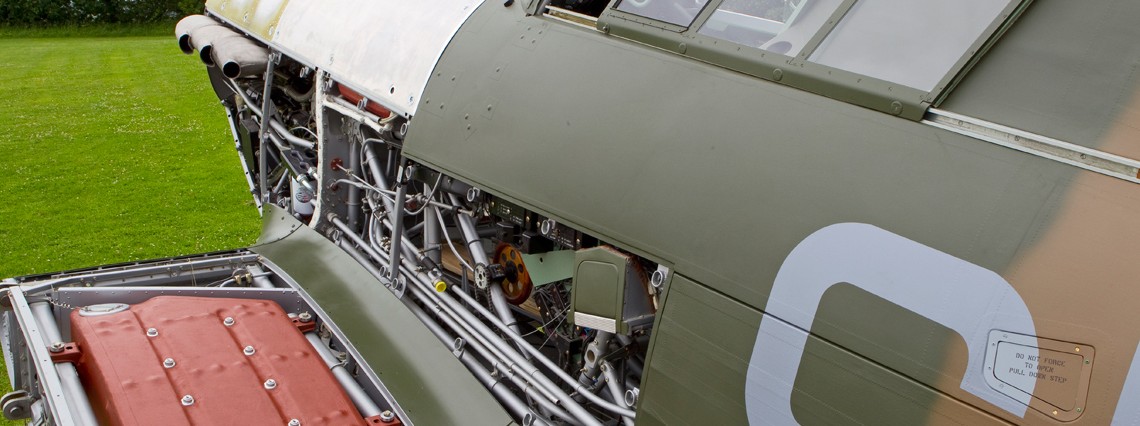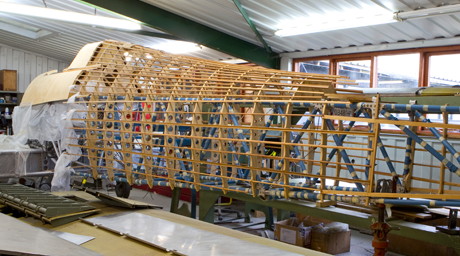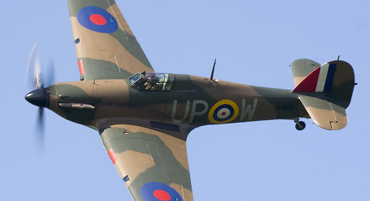AEROPLANE Magazine October 2009
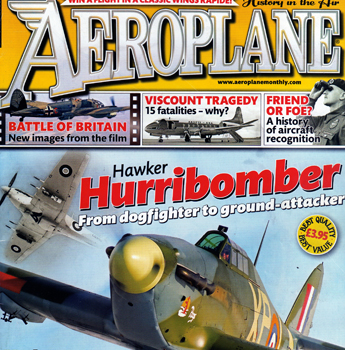
The arrival of any freshly-restored Hurricane on the display circuit is a welcome and rare occurrence – but the latest addition uniquely recreates the ground-attack version of Hawker’s famous fighter. TONY HARMSWORTH reports.
AS MOMENTS OF quintessential Englishness go, this was going to take some bearing. A glorious August morning at the former Battle of Britain airfield at North Weald, and the hangar doors are rolled open to reveal a newly-restored Hawker Hurricane IIB, its broad-shouldered, four-square Churchillian countenance accentuated on this occasion by the 250lb bombs under each wing.
As the doors settle into their stays, a transistor radio in the hangar goes off the deep end as England fast bowler Graham Onions takes consecutive Australian wickets with the first two balls o the morning’s play in the third Ashes test. Only the previous week England had beaten the old enemy at Lords cricket ground for the first time in 75 years, and now, after a timespan only ten years shorter than that, a Hawker Hurribomber is about to be seen flying in public again
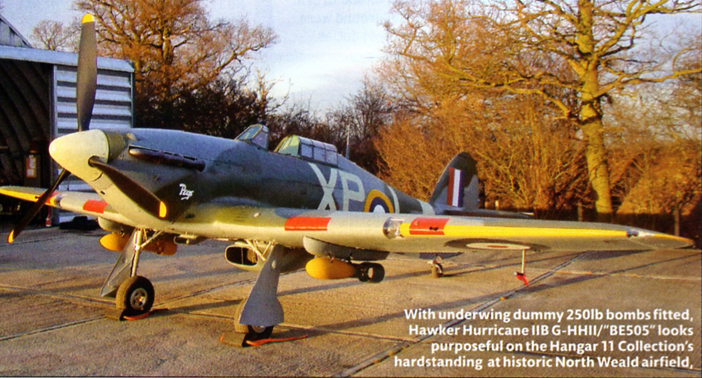
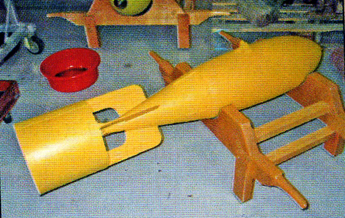
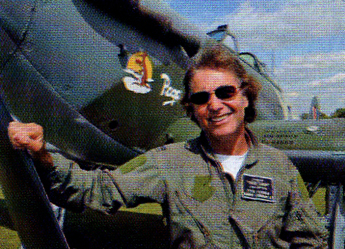
The owner of the aeroplane, Peter Teichman, emerges from the hangar. “You’ll not have seen one life this before”, he smiles. “It has a lot of presence, don’t you think? We can’t fly it with the bombs attached yet, but we are talking to the Civil Aviation Authority about that for next display season.”
Once the aircraft has been rolled outside, Peter’s engineer begins to remove the very convincing replica bombs – for, today, Peter will fly a display in the Hurricane for only the second time, at a corporate event at Bearstead down in the Weald of Kent, where Hurricanes gained immortality in the dark, decisive days of the Battle of Britain.
After displaying the Hurricane, Peter will return to ‘Weald and strap into his Supermarine Spitfire PR.XI, to fly back for a second display. He is now the busiest civilian warbird pilot in Europe, flying 60 public flying displays last season in his Hangar 11 Collection fleet of Curtiss P-40 Kittyhawk, North American P-51D and photo reconnaissance Spitfire.
Peter enthuses, “I want as many people as possible to see these aeroplanes”. Before the test series is over in late August, Peter is due to fly 16 displays over a two-week period, and the Hurricane will be an established fixture on the UK airshow circuit. “The ethos of the Hangar 11 Collection”, he continues, “is to have four of the greatest RAF fighters flying from North Weald, a historic RAF base. Hurricanes flew from here with No 11 Group’s 249 Sqn in the Battle of Britain, so it would be inconceivable not to have a Hurricane – an example of the aircraft that saved the nation more than any other.”
Finding a candidate
Compared with preserved Spitfires, “there is a lot less choice” when acquiring a Hurricane, says Peter. “I Looked at one overseas but soon realised I wanted one from Hawker Restorations Ltd (HRL). They are not just aircraft restorers, but the world’s finest Hurricane restorers.”
The aircraft was previously owned by HRL’s Tony Ditheridge, who was rebuilding it as his personal project. “The work was a year and a half along,” says Peter, “an all the key parts were in place when I acquired it. I signed a rebuild contract with Tony in 2006.”
Built in Canada in 1942 as CCF/R20023, it is one of 1,451 Hurricanes made under licence by Canadian Car & Foundry. Early examples were completed as Mk IIBs with wing attachment points for bomb racks or droptanks, while later ones were built as Mk XIIs. It served with the RCAF as a home-based fighter for the duration of the war. In 1946 it was refurbished to as-new condition and then disposed of as surplus, engine up on a Canadian farm.
Tony Ditheridge bought the Hurricane from Bob Schneider in Hawkins, Texas, in 1989. The package included fuselage, engine mount, tailplane and wings.
“During the restoration I went over to the HRL workshop every couple of weeks”, says Peter. “It was very important to get to know the aircraft from the ground up, and to understand the construction philosophy. It was great to feel part of it.” Retaining originality was also a key requirement. “Anything that could be reused went back on the aeroplane; other missing parts were replaced by original period items wherever possible, as in most cases new parts are just not available”.
Tony Ditheridge, who founded HRL in 1994, relished the chance to restore the aircraft as a Hurribomer. “The first Hurricane we rebuilt took us 34,000 man-hours, but we are now down to about 26,000hr. The challenge on this one was sourcing original bomb rack parts and all the drawings. The bomb racks are very complex, although externally they look simple. In addition this aircraft had 12 guns, not eight, and we had never done a 12-gun Hurricane. Also a huge amount of research went into the exact fabric, paint and stencils.”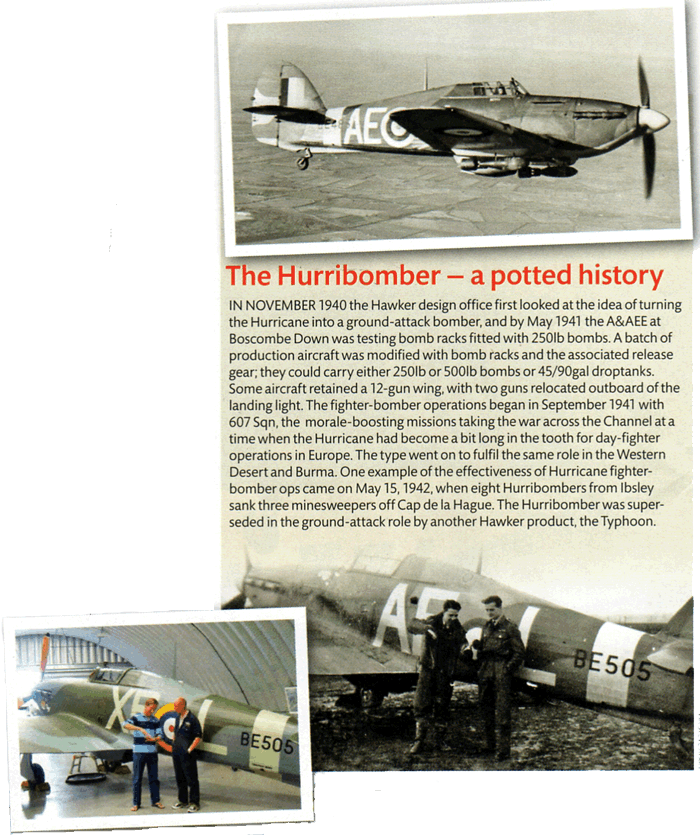
Above right : Sgt Jback “Banger” Yates and Sgt Brooks beside BE505 while it was at 607 Sqn at Manston, coded AF-L. Both Yates and the Hurricane transferred to the newly formed 174 Sqn on March 21,1942.
Above left : Jack’s grandson, Douglas Yates recreates the pose with Hangar 11’s Alec Kinane.
Getting it right
Steve Atkin, an architect by day and a Hangar 11 volunteer in his spare time, researched the paint scheme and masterminded the replica bombs. “The bomb project was done by Hangar 11, in conjunction with Sywell Aviation Museum, who make the fins for us”, Steve says. “An original 250lb bomb was loaned by the RAF Museum, and moulded in glass fibre for us by a specialist company.
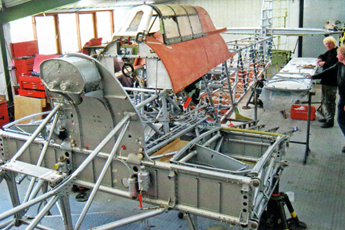
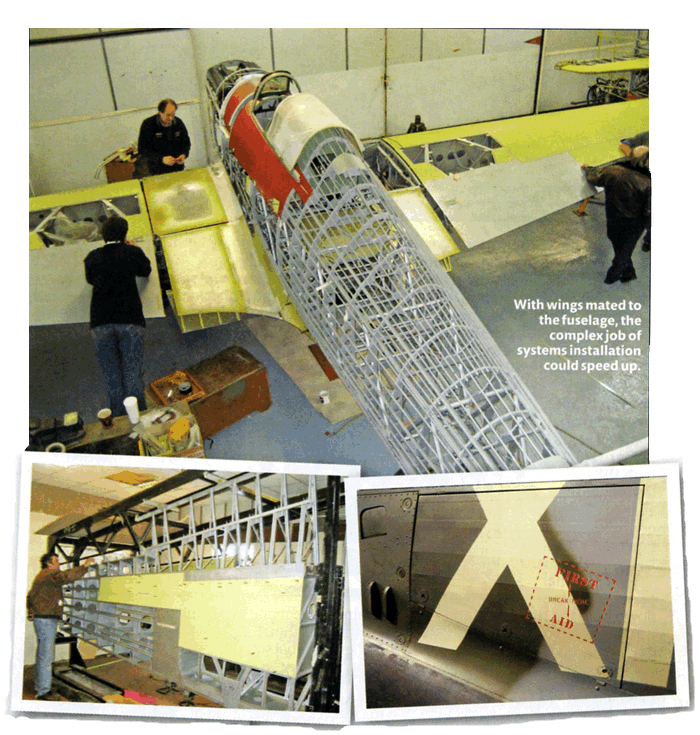
Detailed stencilling on the fuselage.
The metal fittings were made by Eyetech Engineering to our drawings. We worked closely with HRL to ‘reverse engineer’ some missing parts of the bomb carriers. A lot of work went into getting them on to the aircraft, as no other complete original units existed. The job was complicated by the fact that the Hurricane fitment was heavily modified from the Air Ministry standard carriers.
“The bombs were extraordinarily realistic, with all the surface blemishes of the original, and are filled with high-density foam for correct weight distribution. With the bomb carriers fitted one gun has to be omitted, as the fairing fouls the cartridge ejector chutes”.


In the air
The Hurricane flew again after some 60 years in January 2009 with HRL test pilot Stuart Goldspink at the controls, and Peter got to fly it soon afterwards.
“Several other pilots who have flown both the Hurricane and the Spitfire said I would find it disappointing in comparison, even pedestrian”, he says. “Well the reality is that I find it fabulous to fly. It is the easiest of my aircraft to land, with good visibility in the three-point attitude. It does have a few quirky systems, and the undercarriage limiting speed is very low, so I can’t come barrelling into the circuit. It has the original-spec 1,300 h.p. Merlin 29 engine with single-stage blower and a Hamilton Standard three-bladed metal propeller. The Hurricane loses energy quickly with its thick high-lift wing, so during low-level aerobatics you have to be thinking very hard. But what it loses in energy it certainly gains in grace.”
And talking of grace, let’s return to the cricketing theme. By the time this issue appears, the Hurribomber will almost certainly have made more public appearances than England’s middle-order batsmen mustered during the crushingly disappointing fourth rest, Watch out for this superb addition to the vintage scene as Peter bowls up in it.

LATEST ARTICLES
Pilot’s Perspective – Hurricane I V7497/G-HRLI
Ask anyone to name an aircraft from World War Two and they’ll immediately say “Spitfire”, dig a little deeper though and you might just hear “Hurricane”. This is very...READ MORE
Hurricane I G-HRLI/V7497 Flies! ITV News Coverage
Following a lengthy restoration project, Hawker Hurricane Mk I V7497 took to the skies again on 31st August 2018. In the capable hands of Stu Goldspink, one of the...READ MORE

